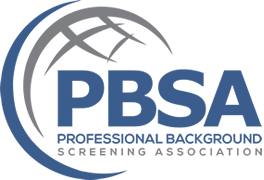Employment law is constantly changing. Processes that once served the company well may need to be revisited to meet current recruitment goals. All companies must evaluate their recruitment functions to ensure that their practices are fully aligned with compliance requirements.
What an assessment reveals
It often starts with an assessment to evaluate areas for improvement in the recruitment process. Inherent risks uncovered during an assessment can guide managers toward better procedures that better align with employment laws. A comprehensive assessment should factor in how technology and tools have been implemented to support recruitment efforts. How well policies are being followed is something else that should be evaluated during an assessment.
Understanding the risks in recruiting
Something as simple as an employment ad can be problematic for a company. There are numerous areas where recruitment functions fail. Employment classification, at-will employment violations, credit check restrictions, and discriminatory practices are some of the main areas where employers fail.
Effective employment advertising
When recruiting for a position, certain steps should be taken to make sure that the employment ad is meeting its intended purpose. As a general guideline, there are some areas a recruiter should focus on when managing an employment listing. The job description is more than a recruitment mechanism. It actually serves as the basis for any legal claim where compliance issues are concerned.
Recruitment ad at a glance
Purpose-Choose the areas of focus and the reasoning behind taking the assessment. Connect with people within the ranks of the organization to gather insight for the assessment. Compliance will be the most common reason for this type of assessment.
Scope-Choose an ideal area to focus on before embarking on an assessment. The area selected should be an area in which you are influential. The approach to designing the scope of the assessment should be realistic.
Process-Identify the procedures for administering the assessment. The assessment process could be viewed as an opportunity to wield support among leadership. All leaders should be alerted to your intentions when administering the assessment.
Data collection-Although assembling the data can be time-consuming, prioritizing which documentation should get the bulk of your intention will reduce the time you spend in this area. Focus on the pertinent data that can be used as a benchmarking tool.
Analysis-Any findings resulting from the assessment should be reviewed objectively by multiple parties from various disciplines such HR consultants and labor attorneys. Where the talent was sourced from and the retention metrics throughout a given timeline are all valuable insight.
Action plans-The findings should be reported to leadership. The cost of the recruitment effort measured against the impact of the efforts taken and time invested are all factors that could be quantified. These findings will guide your recruitment efforts for the foreseeable future.
Evaluate-There will always be successes and failures that need to be considered after the process is over. They should be reviewed periodically over a year’s time.
Meet with an attorney prior to putting anything in writing when preparing for an assessment. This is to avoid any potential liability claims down the line where documentation from an assessment conducted could be beneficial in court. Make sure that you have defined, strategic goals aligned with any recruitment function executed within your organization.




